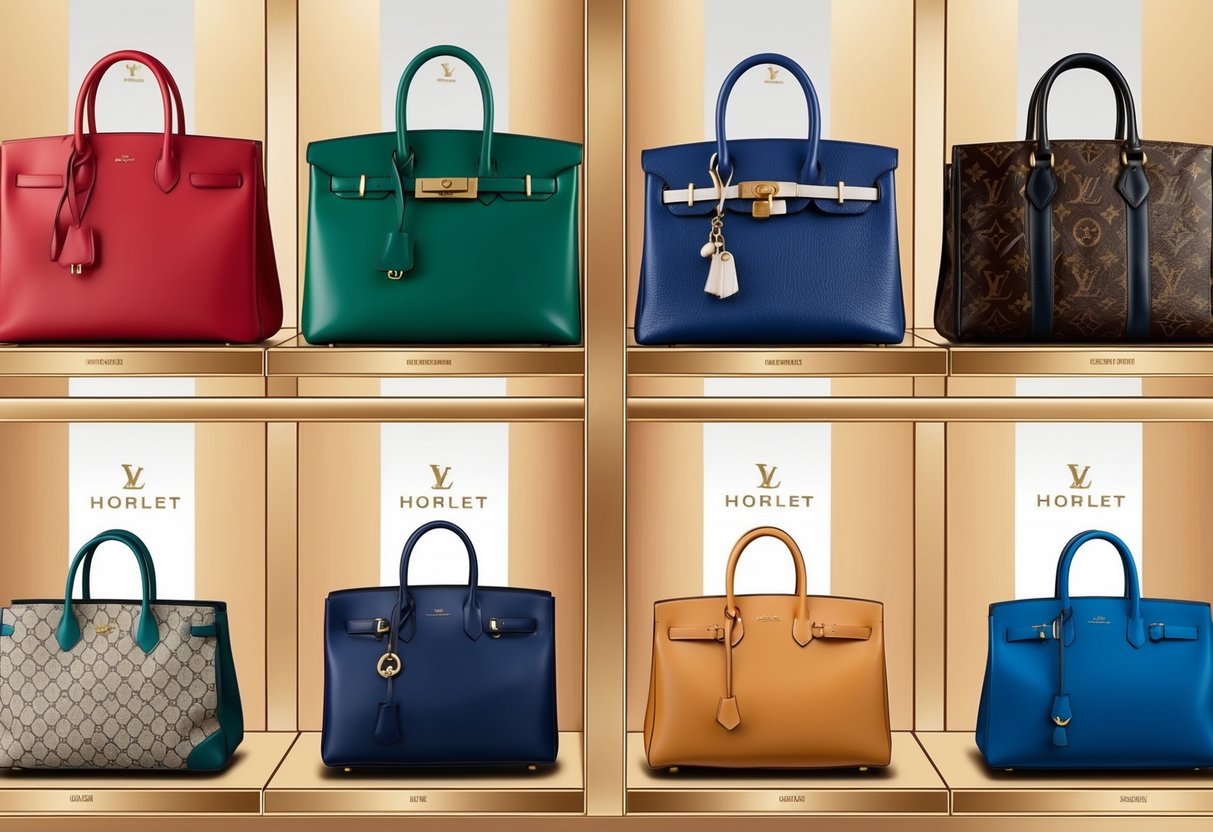
Designer brands are highly sought after, but the rise of counterfeit luxury goods has made it more challenging than ever for shoppers to verify authenticity. Whether shopping for a vintage Chanel bag, a Louis Vuitton wallet, or high-end shoes, buyers risk costly mistakes when purchasing fake designer items.
Experts recommend inspecting several details, such as the quality of materials, stitching, price tags, and especially the accuracy of serial numbers or logos, since counterfeiters often overlook these finer aspects. Clues like misspelled tags, inconsistent fonts, or uneven seams can serve as red flags, helping shoppers identify authentic luxury fashion from knockoffs.
For anyone investing in premium brands, knowing these tips and staying vigilant during purchases is essential for successful luxury shopping. This guide provides expert-backed advice, practical strategies, and the most common warning signs to help anyone shop confidently in the world of designer handbags, accessories, and clothing.
Understanding Counterfeiting in the Luxury Fashion Industry
Counterfeit luxury goods have become widespread, affecting not just high-end brands but also the broader fashion industry. Fake designer bags and accessories are produced with increasing sophistication, making it important for shoppers to recognize the key issues behind counterfeiting and its consequences.
Rise of Counterfeit Designer Bags
The global demand for designer bags has led to a dramatic increase in the counterfeit market. Technology has made it easier for counterfeiters to mimic logos, stitch patterns, and materials.
“Super fakes” are nearly indistinguishable from authentic bags without close inspection, as they use advanced copying techniques and higher-quality materials than traditional fakes. Online platforms and social media have accelerated the spread of fake luxury goods.
Consumers can unknowingly purchase counterfeit bags through popular resale sites or pop-up social media shops. Retailers and buyers now face greater challenges in verifying authenticity due to the improved appearance and feel of these knockoffs.
For example, “super fake” counterfeits are discussed in more detail at Corsearch’s overview of high-quality counterfeits.
Key Motivations for Counterfeiting
Counterfeiting in the luxury goods market is driven by high profit margins and strong consumer demand for luxury brands at lower prices. Replicas of designer bag staples, such as Chanel, Louis Vuitton, and Gucci, are in constant circulation as they are seen as status symbols.
Some buyers knowingly purchase counterfeit bags for their appearance and the social prestige of owning a “designer” item. Other consumers are deceived by convincing fakes that closely mimic authentic goods, especially when shopping online.
Counterfeiters exploit trends and seasonal releases to meet demand swiftly, prioritizing volume and speed over originality. These motivations contribute to the rapid growth and persistence of counterfeiting networks around the world.
Impact on Luxury Brands
The spread of counterfeit luxury goods directly harms legitimate luxury brands in several ways. Brand reputation suffers when consumers come across poorly made counterfeit bags that tarnish the perceived quality and exclusivity of authentic products.
Revenue loss is another major impact, as buyers opt for counterfeit designer bags instead of genuine editions. This not only affects profit margins for brands but also limits their capacity to invest in quality and innovation.
Luxury brands are forced to dedicate significant resources to anti-counterfeiting efforts, such as legal action, technological authentication, and educational campaigns. Brands are increasingly relying on advanced digital tools for authentication, but the counterfeit market continues to evolve and adapt.
Essential Signs of Authentic Designer Bags
Luxury handbags from brands like Louis Vuitton, Chanel, Gucci, Hermès, Fendi, Goyard, and Dior are defined by precise craftsmanship, reliable brand markings, and distinctive security features. Identifying authentic designer bags requires a close inspection of materials, detailed analysis of logos, and verification of systemized serial codes or numbers.
Materials and Craftsmanship
Authentic designer bags are crafted from high-quality materials chosen specifically for their durability and texture. For example, Hermès uses premium leathers like Togo, Clemence, and Epsom, while Louis Vuitton’s signature canvas feels sturdy and never plasticky.
Most luxury brands opt for full-grain leathers or specially treated canvases, with linings that feel smooth and robust. Stitching should be even, tight, and consistent in length.
Loose, uneven, or frayed stitches are signs of counterfeit handbags. Hardware—including zippers, locks, and chains—should feel weighty and solid, never hollow or flimsy.
Hardware often features engraved brand names free of spelling errors or paint inconsistencies. Counterfeit designer bags often use lower quality metals that chip or tarnish quickly, whereas authentic luxury items maintain their finish even with daily use.
Texture and color should be consistent throughout. Any strange odors, sticky finishes, or mismatched materials are immediate red flags.
Detailed insights can be found in guides such as these expert tips on how to spot fake designer bags.
Heat Stamps and Logo Details
Luxury brands apply logos and heat stamps using specific fonts, sizes, and placement standards. For instance, a Chanel heat stamp is embossed deeply, with crisp and clean letters; Louis Vuitton fonts are evenly spaced, sharply pressed, and color-matched to the hardware.
In brands like Dior and Goyard, logo details are never printed off-center, smudged, or misaligned. For Gucci and Fendi, the registered trademark symbol should always be present, especially on newer bags.
Letters are proportionate and the font is brand-standard. Authentic stamps do not flake or rub off with slight friction.
A faint or faded stamp often reveals a fake. Verify that the logo and any serial markings match known authentic examples online or from official stores.
Many counterfeit handbags trip up on font shape or stamp depth, so close comparison is essential. Refer to thorough guides on spotting authentic vs. fake designer handbags.
Serial Numbers and Codes
Serial numbers and authentication codes are standard among luxury handbag brands. Chanel, for instance, uses matching hologram stickers and authenticity cards, while Louis Vuitton bags have a date code stamped inside on a leather tag or fabric seam.
Serial numbers should be unique, never repeating across different bags. Fakes sometimes use identical codes for multiple items.
Compare serial numbers against the brand’s format for the year and style—Louis Vuitton date codes indicate the manufacturing location and year, while Hermès bags include a specific code for the craftsman. The text should be clear and not easily scratched or smudged.
For reliable authentication, serial numbers and codes must match documents, receipts, or brand records. Many luxury brands have guides or online services that help with verifying pre-loved designer bags.
Always scrutinize these codes before making a purchase.



